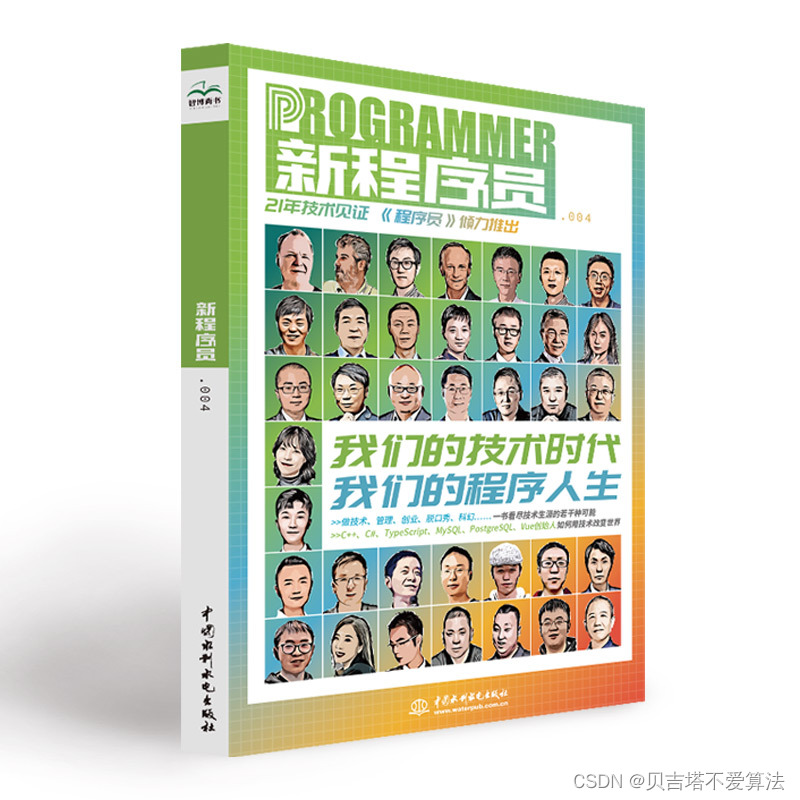Python装饰器
Posted 詩和遠方
tags:
篇首语:本文由小常识网(cha138.com)小编为大家整理,主要介绍了Python装饰器相关的知识,希望对你有一定的参考价值。
装饰器(decorator)是python特有的语法特性,通过函数封装扩展原函数的功能。
下面一步步通过例子说明它的作用和用法。
函数中定义函数
def parent():
print("Printing from the parent() function")
def first_child():
print("Printing from the first_child() function")
def second_child():
print("Printing from the second_child() function")
second_child()
first_child()
parent()
Printing from the parent() function
Printing from the second_child() function
Printing from the first_child() function
函数引用(类似函数指针)
函数也是一个对象,可以赋值给变量,传引用,相当于起了一个别名
my_print = print
my_print('Hello World')
Hello World
返回函数引用的函数
既然函数也是一个对象,那就可以被函数当做返回值,如下:
def parent(num):
def first_child():
return "Hi,I am Melody"
def second_child():
return "Call me Susan"
if num%2 == 1:
return first_child
else:
return second_child
first = parent(3)
second = parent(4)
print(first())
print(second())
Hi,I am Melody
Call me Susan
以上代码根据参数不同,执行不同的函数
简单装饰器
def my_decorator(func):
def wrapper():
print(f"do something before func.__name__ is called")
func()
print(f"do something after func.__name__ is called")
return wrapper
def say_hello():
print("Hello")
say_hello = my_decorator(say_hello)
say_hello()
do something before say_hello is called
Hello
do something after say_hello is called
以上例子说明:装饰器就是一种特殊的函数,接收函数引用作为参数,对函数进行封装,然后改变或改进它的行为,最后返回一个函数引用。
装饰器语法糖
def my_decorator(func):
def wrapper():
print(f"do something before func.__name__ is called")
func()
print(f"do something after func.__name__ is called")
return wrapper
@my_decorator
def say_hello():
print("Hello")
say_hello()
do something before say_hello is called
Hello
do something after say_hello is called
上面代码中的@my_decorator相当于【在函数定义之后加了一句say_hello = my_decorator(say_hello)】的简写。
这里需要注意,my_decorator不一定返回另一个函数的引用,它也可以执行一些额外的代码后,还是返回被装饰函数本身。
装饰器复用
可以将一些常用的函数包装器放在一个文件中方便后续进行复用
# 文件 decorators.py
def do_twice(func):
def wrapper_do_twice():
func()
func()
return wrapper_do_twice
# 引用上述文件中的方法
from decorators import do_twice
@do_twice
def say_hello():
print("Hello")
say_hello()
Hello
Hello
带参数的装饰器
from decorators import do_twice
@do_twice
def say_hello_to(name):
print(f"Hello, name")
say_hello_to("Susan")
执行后报错:TypeError: wrapper_do_twice() takes 0 positional arguments but 1 was given
那要如何避免上述问题呢,答案是用*args和**wargs
在decorators.py中加入如下新函数:
# 文件 decorators.py
def do_twice_parms(func):
def wrapper_do_twice(*args,**kwargs):
func(*args,**kwargs)
func(*args,**kwargs)
return wrapper_do_twice
from decorators import do_twice_parms
@do_twice_parms
def say_hello_to(name):
print(f"Hello, name")
say_hello_to("Susan")
Hello, Susan
Hello, Susan
被装饰函数的元数据更新
help(say_hello_to)
Help on function say_hello_to in module __main__:
say_hello_to(name)
可以发现查看say_hello_to函数相关信息(元数据)时,指示为装饰器函数内的wrapper_do_twice,显然这不是我们想要的,如何改进呢?
本质上需要更新函数的__name__、__doc__、__module__属性,让其指向原函数,python有个惯用手法来解决此问题,那就是用functools模块的wrap方法:
import functools
def do_twice_parms(func):
@functools.wraps(func)
def wrapper_do_twice(*args,**kwargs):
func(*args,**kwargs)
func(*args,**kwargs)
return wrapper_do_twice
@do_twice_parms
def say_hello_to(name):
print(f"Hello, name")
say_hello_to("Susan")
Hello, Susan
Hello, Susan
再次查看say_hello_to的帮助信息,已指向原函数:
help(say_hello_to)
Help on function say_hello_to in module __main__:
say_hello_to(name)
装饰器常用模板
从以上例子我们可以总结出装饰器函数的常用模板:
import functools
def decorator(func):
@functools.wraps(func)
def wrapper_decorator(*args, **kwargs):
# Do something before
value = func(*args, **kwargs)
# Do something after
return value
return wrapper_decorator
实际应用:函数执行时间
下面举个实际应用的例子,调用函数时,同时打印执行的时间
import functools
import time
def timer(func):
"""打印函数执行的时长"""
@functools.wraps(func)
def wrapper_timer(*args, **kwargs):
start_time = time.time()
value = func(*args, **kwargs)
end_time = time.time()
print(f"Finished func.__name__ in end_time-start_time:.3f seconds")
return value
return wrapper_timer
@timer
def do_some_loops(num_times):
for _ in range(num_times):
sum([i*i for i in range(10000)])
do_some_loops(9)
do_some_loops(99)
do_some_loops(999)
Finished do_some_loops in 0.020 seconds
Finished do_some_loops in 0.165 seconds
Finished do_some_loops in 1.234 seconds
参考资源:
https://realpython.com/primer-on-python-decorators/
https://docs.python.org/3/library/functools.html#functools.wraps
 开发者涨薪指南
开发者涨薪指南
 48位大咖的思考法则、工作方式、逻辑体系
48位大咖的思考法则、工作方式、逻辑体系
以上是关于Python装饰器的主要内容,如果未能解决你的问题,请参考以下文章